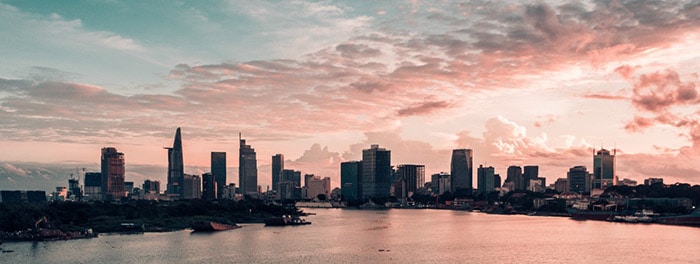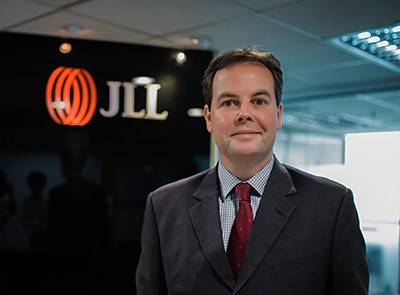 It’s widely thought that Ho Chi Minh’s new financial district and mixed-use urban development, Thu Thiem, will do for the city what China’s Lujiazui Financial and Trade Zone area did for Shanghai. But, how much is wishful thinking versus reality?
It’s widely thought that Ho Chi Minh’s new financial district and mixed-use urban development, Thu Thiem, will do for the city what China’s Lujiazui Financial and Trade Zone area did for Shanghai. But, how much is wishful thinking versus reality?
Sitting across the Saigon River, facing the existing CBD, the 657-hectare site is poised to be the largest inner city mixed-use development in Southeast Asia, and it will be home to headquarters and residential towers supporting a residential population of 145,000 and employee population of 217,000.
Given the rapid pace of growth in Ho Ch Minh City, the potential for Thu Thiem is huge. According to the municipal’s People Committee, the city is growing at an average annual rate of 10.7 percent – over 1.6 times higher than the country’s average of 6.6 percent. The city’s GDP contribution to Vietnam’s economy increased from 16.7 percent in 1996 to 21.6 percent in 2016.
The master plan for Thu Thiem is set to alleviate the lack of supply faced in HCMC’s existing CBD, according to Stephen Wyatt, Country Head of JLL Vietnam. “As infrastructure improves within Thu Thiem, we anticipate that larger firms will start considering Thu Thiem as a viable alternative to the existing CBD and set up their head offices there.”
Initial Hurdles

Stephen Wyatt, country head for JLL Vietnam
According to Wyatt, Thu Thiem is finally at a “tipping point” after facing several initial difficulties which include complicated land compensation issues, turbulent economic conditions and a lack of favourable government policies in the two decades since it was first introduced. Developers were also wary of the the poor soil conditions in the area, requiring heavy investment in piling and foundation structures to proceed with projects.
But Thu Thiem’s strategic location and close proximity to the existing CBD remain selling points. To boost infrastructure works and improve accessibility, the government has implemented Build Transfer (BT) projects in which developers obtain land in exchange for building infrastructure. The HCMC Planning & Investment Department revealed that 23 BT projects have been signed so far, including the building of four major roads in the Thu Thiem urban area.
Thu Thiem is also expected to benefit from the future Metro Line 2 that is projected to transport 480,000 passengers every day.
“The construction of Metro Line 2 and the four major roads is seen as the government’s commitment to turn Thu Thiem into Ho Chi Minh City’s new financial and residential district,” says Wyatt. “By improving the infrastructure and accessibility to the area, the authorities hope to encourage more developers to invest in large-scale real estate projects in the area.”
Developer Push
Several major developers have already signed up. In 2016, Keppel Land entered a joint venture with local Vietnamese partners to develop a prime waterfront site with premium residential apartments, office and retail properties. South Korean conglomerate Lotte also recently announced a US$885 million complex in Thu Thiem designed to be an Eco-Smart City.
Wyatt adds that more can be done to speed up Thu Thiem’s development in regards to preferential policies and incentives for developers. “The creation of a special ‘economic zone’ with less bureaucratic red tape will create a more favourable environment while a sound legal and planning system will also catalyse the area’s development for investors and developers,’ he says.
Click to read more about Vietnam’s real estate market.
This post is sponsored by JLL. To get regular updates on global real estate investment, you may subscribe to The Investor.com.
Leave a Reply